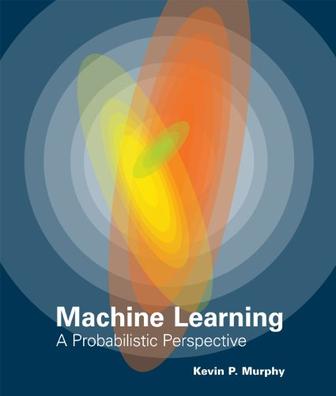
章节目录
Chapter 1: Introduction Chapter 2: Probability Chapter 3: Statistics Chapter 4: Gaussian models Chapter 5: Generative models for classification Chapter 6: Discriminative linear models Chapter 7: Graphical Models Chapter 8: Decision theory Chapter 9: Mixture models and the EM algorithm Chapter 10: Latent Linear models Chapter 11: Hierarchical Bayes Chapter 12: Sparce Linear Models Chapter 13: Kernels Chapter 14: Gaussian processes Chapter 15: Adaptive basis function models Chapter 16: Markov and hidden Markov Models Chapter 17: State space models Chapter 18: Conditional random fields Chapter 19: Exact inference algorithms for graphical models Chapter 20: Mean field inference algorithms Chapter 21: Other variational inference algorithms Chapter 22: Monte Carlo inference algorithms Chapter 23: MCMC inference algorithms Chapter 24: Clustering Chapter 25: Graphical model structure learning Chapter 26: Two-layer latent variable models Chapter 27: Deep learning
内容简介
Today's Web-enabled deluge of electronic data calls for automated methods of data analysis. Machine learning provides these, developing methods that can automatically detect patterns in data and then use the uncovered patterns to predict future data. This textbook offers a comprehensive and self-contained introduction to the field of machine learning, a unified, probabilistic approach. The coverage combines breadth and depth, offering necessary background material on such topics as probability, optimization, and linear algebra as well as discussion of recent developments in the field, including conditional random fields, L1 regularization, and deep learning. The book is written in an informal, accessible style, complete with pseudo-code for the most important algorithms. All topics are copiously illustrated with color images and worked examples drawn from such application domains as biology, text processing, computer vision, and robotics. Rather than providing a cookbook of different heuristic methods, the book stresses a principled model-based approach, often using the language of graphical models to specify models in a concise and intuitive way. Almost all the models described have been implemented in a MATLAB software package--PMTK (probabilistic modeling toolkit)--that is freely available online. The book is suitable for upper-level undergraduates with an introductory-level college math background and beginning graduate students.
下载说明
1、Machine Learning是作者Kevin P. Murphy创作的原创作品,下载链接均为网友上传的网盘链接!
2、相识电子书提供优质免费的txt、pdf等下载链接,所有电子书均为完整版!
